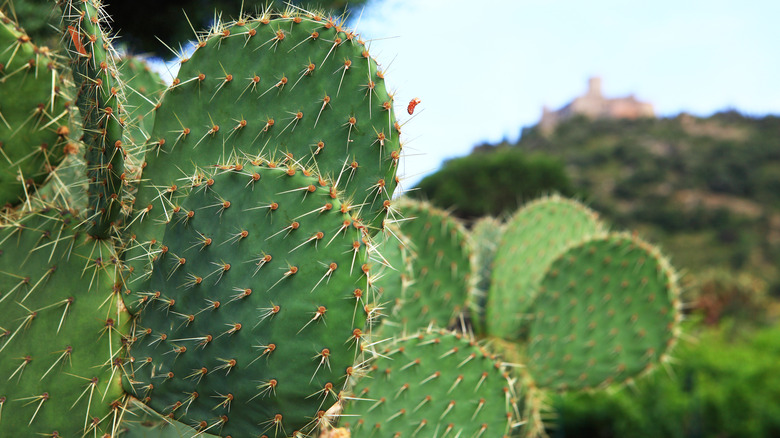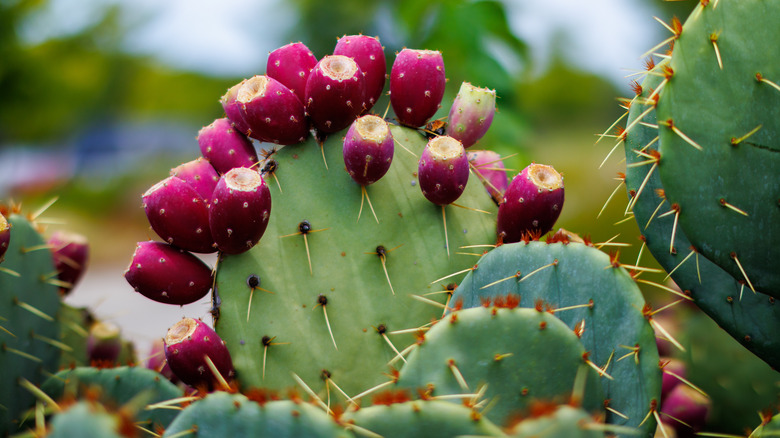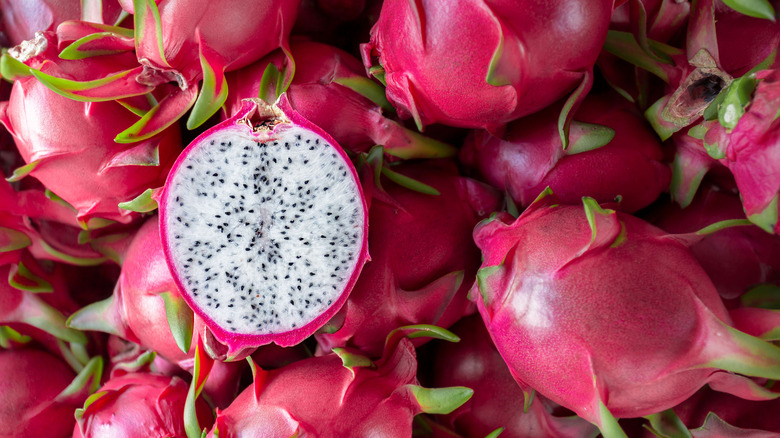Can You Eat Cactus?
Cactus might seem like an intimidating snack with its sharp spines, but both cactus fruit and the cactus plant itself are quite delicious — and yes, you can eat them both! The most commonly consumed cactus is from the genus Opuntia, which encompasses more than 100 species of cacti. You might know its common name, the prickly pear cactus. Opuntia grows from Canada to South America, but becomes a more important food source further south in warmer climates where drought is imminent.
On a plate, the cactus paddles — those green leaves on the plant that are covered in spines — are often called nopales, a staple in Mexican cuisine. Nopales can be eaten raw or cooked after they've been properly de-spined. To avoid the hassle of removing the spines, you can search for canned or jarred nopales at your local Mexican grocery store or farmers market. In terms of flavor, most agree that nopales taste like green beans and have the texture of okra — a little slimy.
From late spring to early fall, a happy Opuntia plant will produce fruit known as prickly pear or, if you're a Spanish speaker, tuna. These fruits bloom right on the tops of the cactus paddles from red, yellow, or purple flowers. Fruit from the prickly pear cactus takes on a red hue and a much rounder, fuller shape than the cactus paddles while retaining the spikes. The actual flavor of prickly pear fruit has been compared to melon, kiwi, or tart strawberry — super sweet.
The history of nopales
Opuntia is not just a food — it is a symbol. Its cultural significance is so strong that it appears on the Mexican flag. Nopales, in particular, have a history with Mexico that dates back thousands of years as a source of food, water, dye, and medicine. Medicinal uses included applying sliced nopales to open wounds or swollen areas of the body. Today, adding nopal flowers to your bathwater is encouraged for added relaxation. It is even baked into modern bath and body products.
Mostly, these abundant cacti paddles fed native people during droughts. It also fed their livestock, particularly cattle. The scrumptious succulent was likely eaten raw after the cactus spines were removed by being burned or rubbed in the sand. A common traditional preparation is ensalada de nopal: nopales, red tomatoes, and white onions coated in olive oil and white vinegar and topped with a little salt and pepper. In the colder months, sopa de nopal, or cactus soup, is made.
Today, there are infinite ways to incorporate nopales into your diet. Cactus paddles can be tossed in a pan or skillet alongside onions and dressed with a little salt and lime juice to be eaten as a stand-alone entree. Alternatively, you might serve them up in some egg and cactus-paddle tacos or with your breakfast for nopales con huevo. Nutritionally, they are a source of vitamin C, magnesium, and calcium.
Cooking and consuming other cactus varieties
The prickly pear cactus isn't the only desert plant that can be made into a meal. In fact, most cactus species are edible. But before you uproot the succulents on your windowsill and toss them in your salad, you should know that although most cacti are safe for human consumption, that doesn't necessarily mean they all taste good.
Other cacti that have made their way into the human diet include dragonfruit as well as the lesser-known Peruvian apple and barrel cactus fruit. Dragonfruit (also known as pitaya) has a spiky skin that, once removed, reveals a mushy, white inside with the taste and texture of kiwi. Pitaya is commonly used as a base for bowls packed with fruit and granola for a sweet and nutritious snack. The Peruvian apple cactus is exactly what it sounds like; it is native to Peru and tastes like an apple with a lot more juice. Although barrel cactus fruit is edible, it is seldom consumed; perhaps its lemony taste is the deterrent. Nonetheless, barrel cactus fruit might be harder to find in recipes because citrus fruit simply better fills the role it would play.



